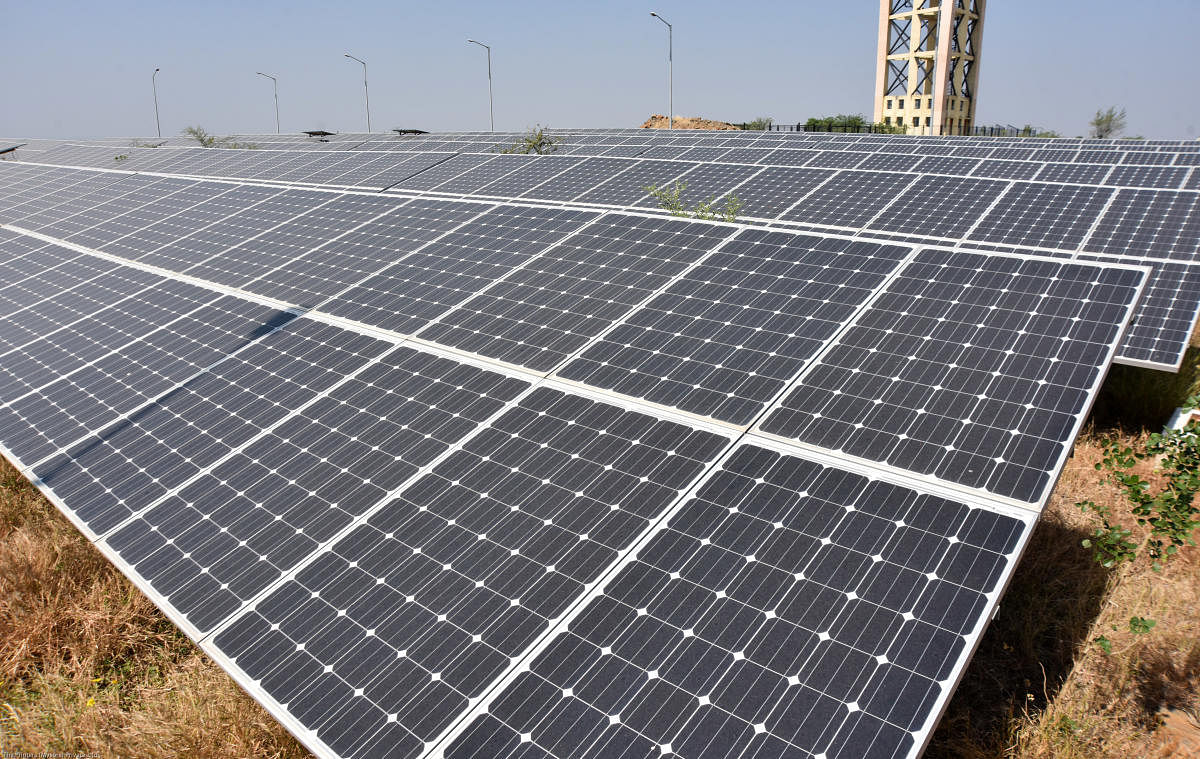

Maintaining a heterogeneity of various energy resources, Karnataka, so far, has managed to shield itself from the worst power crisis looming large over the country due to severe shortage of coal.
Switching between renewable energy (RE) and non-renewable energy resources, with minimum dependence on thermal power generating units, Karnataka has managed to meet its growing energy demand, scaling new heights with consumption of close to 15,000 MW per day this summer.
Availability of mixed energy resources that was planned and commissioned in the last few years has helped Karnataka overcome the unfolding power crisis at a time when a majority of states are resorting to unscheduled power cuts, officials in the Energy department said.
“The nationwide short supply of coal has failed to make an impact on the power scenario in Karnataka. Due to the effective planning previously, keeping in mind the possible consumption pattern, today Karnataka has surplus power,” V Sunil Kumar, Energy Minister, said.
The spurt in demand, largely due to the resumption of industries, has triggered a severe power crisis in Andhra Pradesh, Maharashtra, Tamil Nadu, Gujarat and other states that are largely dependent on conventional (thermal power) energy.
“We (Karnataka) are able to insure ourselves due to mixed energy resources. As much as 51% of our installed capacity comes from RE sources such as solar, wind and cogeneration. Another 12% comes from hydro resources and 3% from nuclear sources. Only about 34% of our energy requirement is met by the thermal plants,” explained G Kumar Naik, additional chief secretary (energy).
However, the consumption trend has left engineers worried.
A senior executive engineer from the Energy department said, “Karnataka achieved an all-time peak load of 14,818 MW in March 2022, with the highest consumption of 285 million units (MU), which was 30% to 40% more than last year. Yet, we were able to manage the situation due to increased generation. There could be power cuts here and there. These are not related to supply of coal, but are because of the rain-related damages or infrastructure work like cabling.”
Karnataka has also broken its previous record for annual generation.
“The Karnataka Power Corporation Limited (KPCL) had achieved the highest-ever generation in 2014-15, with 29,784.72 MU. In 2021-22, we have generated 32,503 MU. Currently, all coal plants are operated at minimum requirement level, thereby conserving coal. Otherwise, the cost of production will go up to Rs 11 per unit due to imported coal,” another engineer from the department said.
However, the government is watching the situation with its fingers crossed.
“We are planning to increase our RE resources capacity, aligning with the Centre’s decision. The RE variation impact on the grid could be better managed by large grid-connected storage systems in the form of pumped hydro storage and battery energy storage systems, where about 25% to 30% of the energy can be stored, besides buying low-cost power from the market,” Naik said.
Check out the latest videos from DH:
